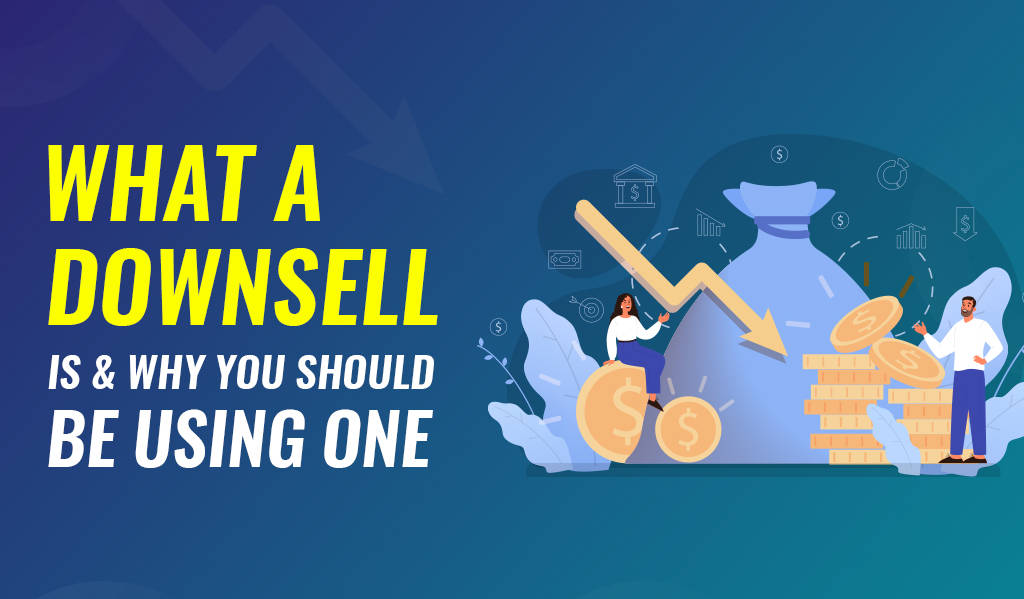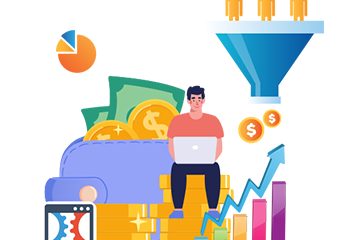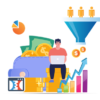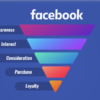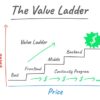Reviews
What Is A Downsell?
If you notice that the consumer is not interested after your sales pitch, don’t fret. You can try presenting them with a downsell to see if this interests them more than what they originally wanted. This could be an offer for a discount on your product or a different model of your product.
Ready to stop leaving money on the table?
Continue reading…
What Is a Downsell?
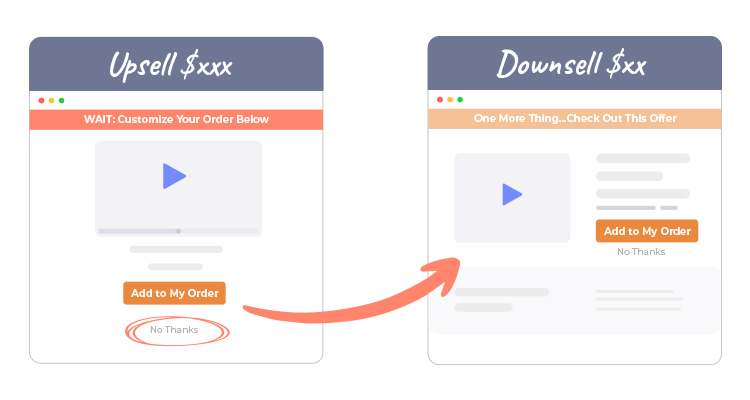
A downsell is an offer you make to the possible customer after they’ve declined your initial offer. The name of this type of interaction between a seller and buyer suggests that it’s more of a downgrade in price from the original deal, with the idea being that some customers might be interested in buying less expensive products.
For instance:
When you go to a car dealership to buy a car, the salesperson is very likely to start by selling you on the most expensive car that is within your price range.
But if you decline that offer, they may suggest a less expensive car instead.
That creates a possibility of you purchasing it.
Meanwhile, if the salesperson would have let you go once you declined their first deal, they would have lost that opportunity to make a sale.
What Are the Advantages of Downselling?
Let us take a look at the three key benefits of downselling:
Extra Revenue
A downsell is the last-ditch attempt to make a sale.
Sure, it would have been better to convince the possible customer to obtain your initial offer, but that did not happen.
You don’t have anything to lose at this point. So it makes sense to make one final attempt to sell them something.
Note that even the most affordable downsells may add up to a substantial amount of extra revenue over time.
A $7 downsell generates
- $70 from 10 sales.
- $700 from 100 sales.
- $7,000 from 1000 sales.
These may not be life-changing sums of money, but they are nothing to scoff at either.
Can you refuse a $70, $700 or a $7,000 lottery win? Of course not. So why would leave that excess revenue on the table?
Getting the Client to Take the Next Step in Your Sales Funnel
Robert Cialdini discussed six principles of persuasion in his bestselling book”Influence”.
One of those principles is called commitment and consistency. It says that we value consistency in others and want to be viewed as consistent ourselves.
What it means in the sales context is that a person who has already purchased something from you’re more likely to be open to your subsequent offers.
Although a downsell may not make you a lot of money, it still gets the client to take another step in your sales funnel. And that makes it easier for you to sell other products .
Increased Customer Lifetime Value (CLV)
Getting a possible customer who would have bought nothing to buy something generates extra revenue.
But due to the dedication and consistency principle we have just mentioned, in addition, it makes them more likely to spend money on your merchandise in the future.
Downselling vs Upselling vs Cross-selling
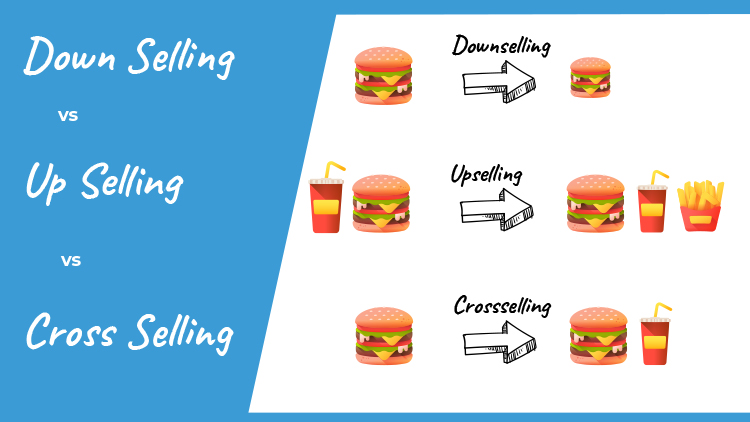
You already know that downselling is a sales technique in which you offer the potential client a less valuable and more affordable product known as a downsell after they’ve rejected your first offer.
Additionally, there are upselling and cross-selling.
Let us take a look at both of these sales techniques and find out how they’re different from downselling.
What Is an Upsell?
An upsell is an update to the product which the possible client has already decided to buy.
A classic upselling example is the McDonald’s upsell of”Would you like to supersize that?” . The person is about to buy a meal and the cashier offers them to maximize its size.
Upselling is effective because when somebody has already decided to buy something, they are likely to be open to an offer that increases the value of that purchase.
What’s a Cross-Sell?
The classic example of a cross-sell is when McDonald’s offers fries with your burger. It seems like such a small offer, but it can actually make the difference between someone buying or passing on that order.
The best part about this cross-sell tactic is that you have already made the customer happy after they’ve decided to buy from your business – so they’re more likely to say yes to an additional purchase!
Cross-selling is successful because when someone has already decided to purchase something, they are most likely to be open to considering adding complimentary items to their order.
What’s the Difference Between Downselling, Upselling, and Cross-Selling?
As you can see, all three sales techniques are similar in the sense that they offer the possible customer something that they did not plan to buy.
That being said, the timing is completely different:
- You offer a downsell when a client has rejected your offer.
- You offer an upsell when the customer has accepted your offer and is going to make the purchase.
- You offer a cross-sell either when the client has accepted your offer and is going to make the purchase or when they’ve already made the purchase.
Any well-designed sales funnel must implement all three sales techniques to optimize revenue.
Best Practices: How To Downsell Effectively
So how do you downsell effectively?
Here are the three best practices that you should keep in mind…
#1 Do Not Discount the Original Offer
Your primary impulse may be to use a discount on the initial offer as a downsell.
Say, if your product costs $97, but the customer rejected the deal, you may be tempted to drop the cost down to $67 in the hope that they’ll buy because of this discount.
However, while this might get you a sale, it will probably damage your company in the long run. Why?
Because when you do this:
- You train people never to pay the full price for your products. When you make someone a downsell offer like that, the next time they want to buy something from you, they will reject your first offer just to see if they can find another discount.
- You offend people who did pay the full price for your products. How would you feel if you bought a item, then found out that somebody else got it with a massive discount? And what if they only got that discount because they rejected the initial offer? You’d likely feel foolish for paying the entire price for that item. Also, when a business does this, they are rewarding their enthusiastic customers due to their lack of enthusiasm and penalizing their enthusiastic customers for their own excitement.
So don’t discount your initial offer. You need to have a separate downsell.
#2 Create a Downsell Offer
You will find the most out of downselling if you produce a downsell offer that’s designed specifically for that purpose.
You need something that offers a solution to a problem that the prospective customer is struggling with. It should be the same or relevant to the one that your original offer solves.
It is ideal if it’s a direct downgrade from your first offer (e.g. they are not interested in your $297 video program, but maybe they will be considering a $7 ebook on the same subject?).
#3 Maintain the Price in the Impulse Purchase Range
You want to earn your downsell offer so cheap that buying it would be a no-brainer.
$7 is a great price point for downsells.
High Price + Low Price = Powerful Downsell
The secret to successful downselling is to create an offer that provides a bunch of value and then charge a ridiculously low price for it.
When you are only charging $7 for something, you might feel as if you may also give it away for free. It may seem like such an insignificant amount of money.
But check this out mind-blowing math:
$0 < $7
The client has rejected your initial offer. They would have left without purchasing anything. But now they bought a $7 merchandise. That is $7 more in your bank account.
And as we discussed previously, even seemingly insignificant amounts of money can add up to a significant increase in earnings over time.
Conclusion
You never know when you’ll get your lucky break, and sometimes it’s worth taking a chance on making the sale. You can always offer them something cheaper if they’re just not willing to shell out the full price of your product or service.
You never know when someone will be in need of what you have to offer – so don’t let those opportunities go by without trying everything possible to make that sale!
So make sure to apply it in your sales funnel:
- Produce a downsell offer.
- Pick a price point inside the impulse buy range (<$10).
- Give it to prospective customers who have seen a sales page for one of your products, but chose not to purchase it.
You may be amazed by the effect this can have on your bottom line!
>>>Join The One Funnel Away Challenge<<<


